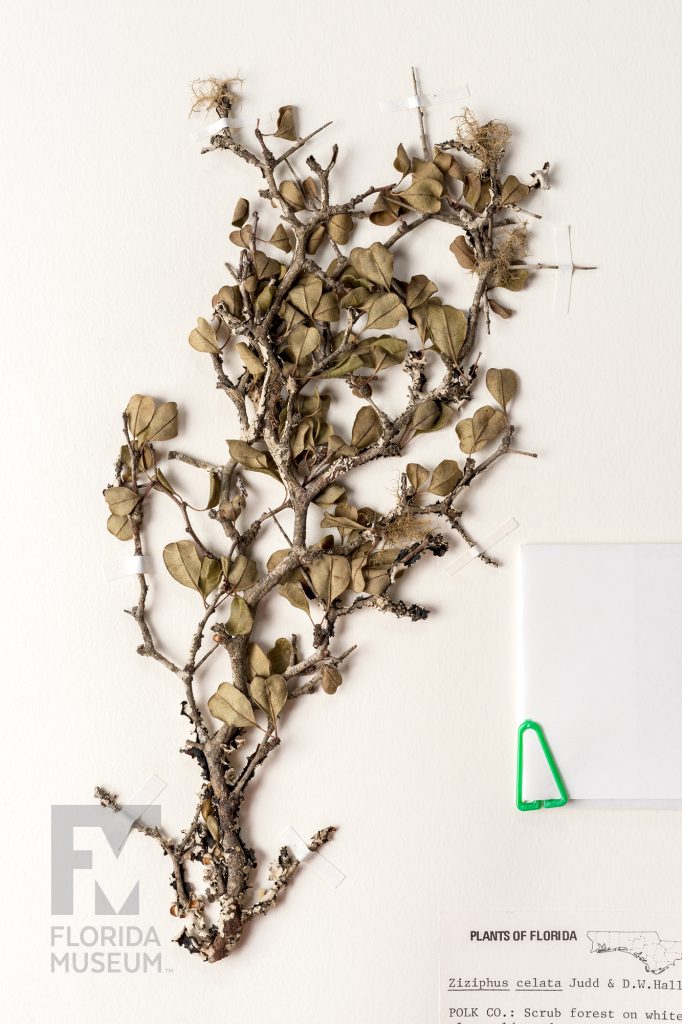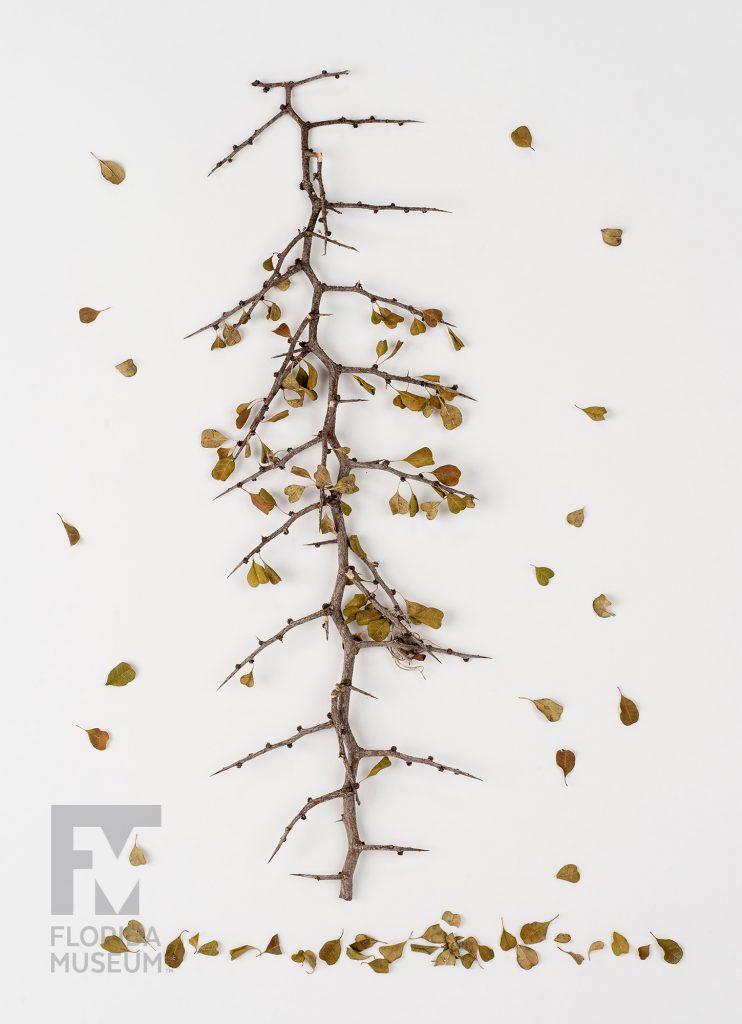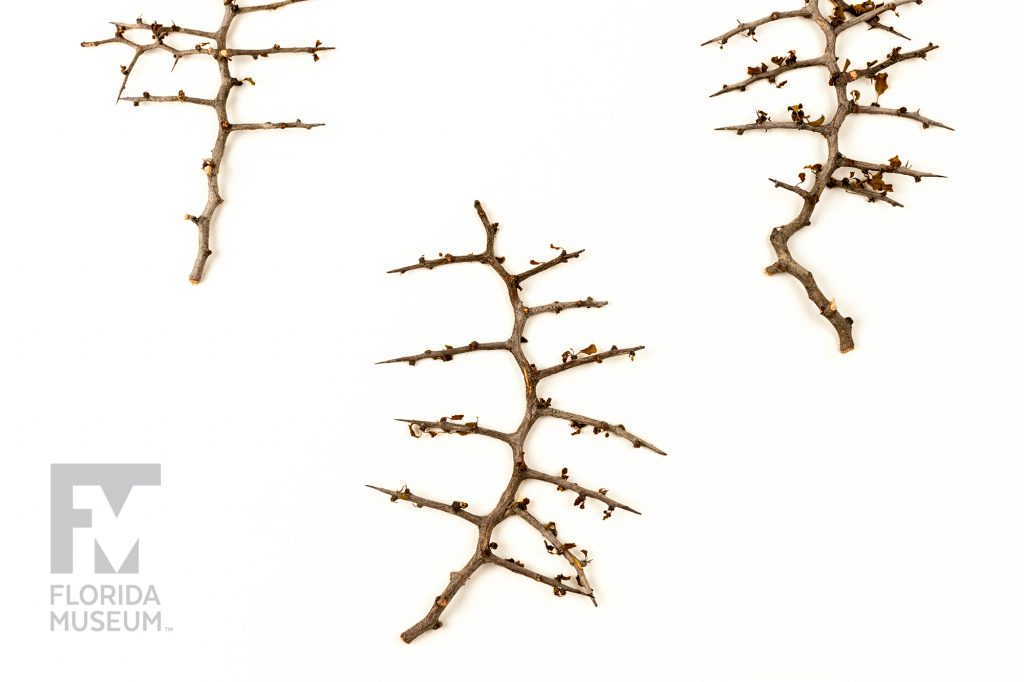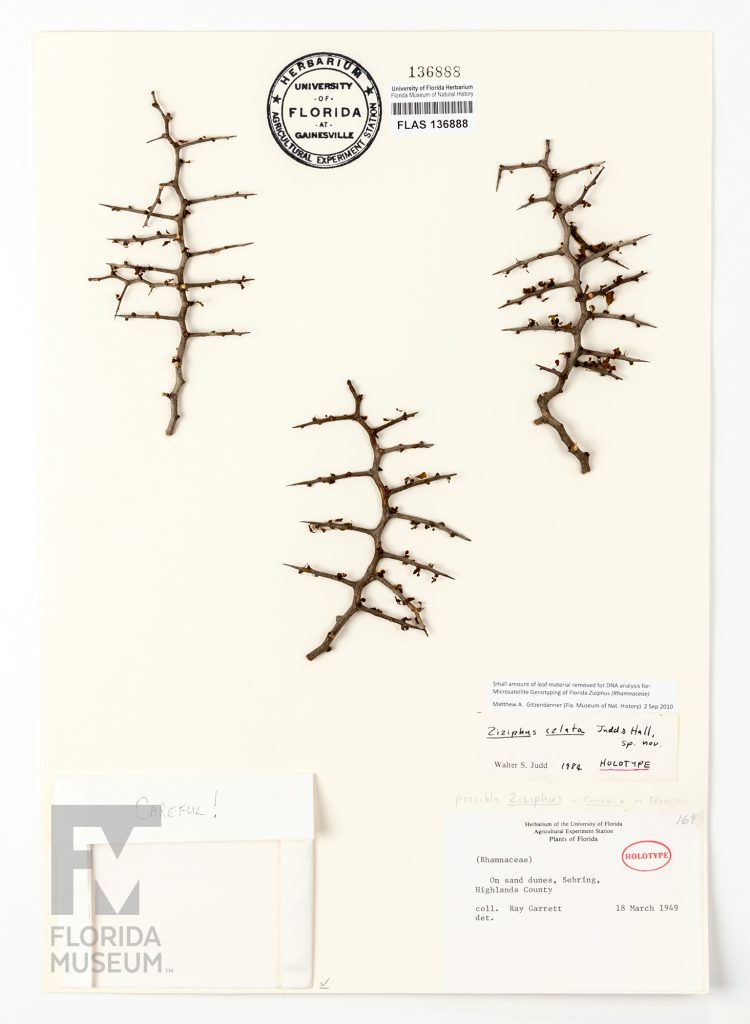Scientists thought Florida Jujube was extinct when it was described from a single Florida Museum specimen collected in 1949. It was later rediscovered in the wild in the 1980s, though due to its limited numbers, the future of this spiny shrub is uncertain.
Summary
Florida Jujube (Pseudoziziphus celata)
From Highlands Co., Florida, Mar. 1949
Collection
Story
Florida is unique among states east of the Mississippi River in having over 200 endemic (native) species of plants – most have only a handful – and this thorny shrub is one of the rarest.
It was described in the early 1980s by David Hall and me on the basis of a specimen that had been collected in 1948 by Ray Garrett and then filed away in the Herbarium. The specimen was just a small twig, having only flowers and a few leaves, but we were sure that it represented an undescribed species! We searched in natural areas of Highlands County, where the specimen had been collected, but could discover no populations of the plant, so we formally described it as Ziziphus celata, on the basis of the old Garrett specimen. We chose the epithet celata, which means “hidden,” because we could not find any living plants. This situation is actually not that unusual – most new species are discovered in the Herbarium, not in the wild.
Fortunately, living plants were rediscovered in 1987, and now 14 natural populations are known – all in disturbed areas formerly occupied by high pinelands. The Lake Wales Ridge, where this plant is found, is one of Florida’s centers of endemism, but unfortunately most of these endemics are now endangered because 97% of the land in this region has been converted to agricultural or urban use.
Once the plant was rediscovered, scientists at UF, the Museum, Archbold Biological Station and Bok Tower Gardens began conducting genetic and recovery efforts, as nearly all of the remaining populations are merely clonal clumps and are sexually non-reproductive. As a result, fruit formation is now occurring, increasing the chances that the species will survive.
Finally, it is interesting that recent studies of DNA-sequence variation have shown that this species is more closely related to members of the genus Condalia than it is to other species of Ziziphus. Therefore, it is now recognized in a new genus – and is given the name Pseudoziziphus celata.
Walter Judd
Distinguished Professor Emeritus, University of Florida Biology Department*
Courtesy Faculty, Florida Museum of Natural History
Exhibit
On display Sept. 23, 2017-Jan. 7, 2018, Rare, Beautiful & Fascinating: 100 Years @FloridaMuseum celebrated the Museum’s rich history. Each Museum collection was asked to contribute its most interesting items and share the stories that make them special. Though the physical exhibit is closed, this companion website remains online, providing an opportunity to experience the Florida Museum’s most treasured specimens.
Exhibit Area: On The Brink
Theme: Cautionary Tales
 Want to see more? Explore more than 300 breathtaking color photos of plants, animals, fossils and cultural heritage materials from the Florida Museum of Natural History’s collections in the award-winning book All Things Beautiful available from the University Press of Florida.
Want to see more? Explore more than 300 breathtaking color photos of plants, animals, fossils and cultural heritage materials from the Florida Museum of Natural History’s collections in the award-winning book All Things Beautiful available from the University Press of Florida.
*This title was accurate at the time the exhibit was on display in 2017. Please visit the department website to verify current staff and student information.



